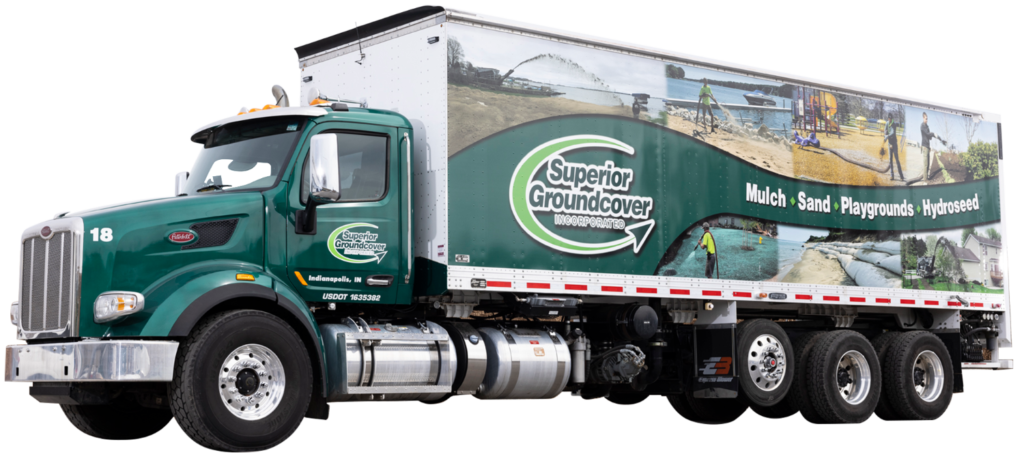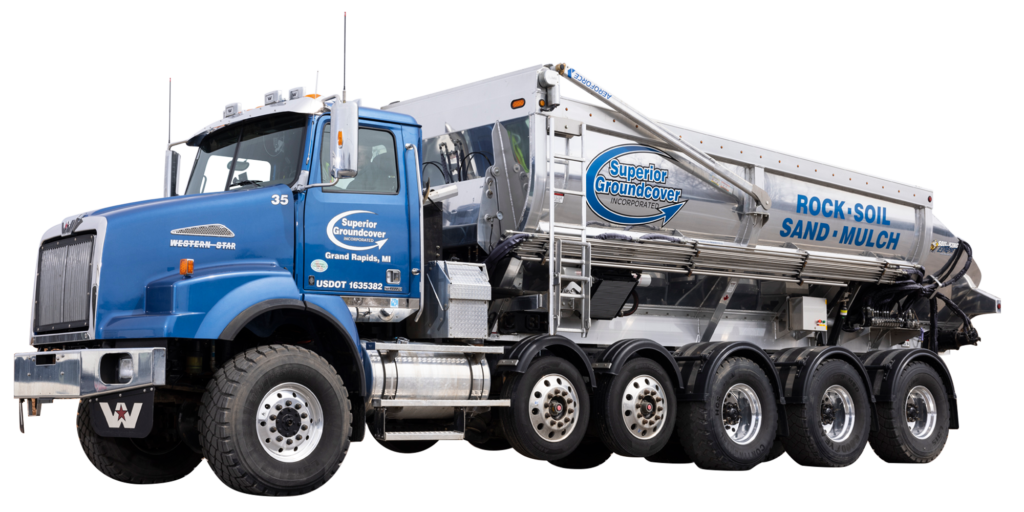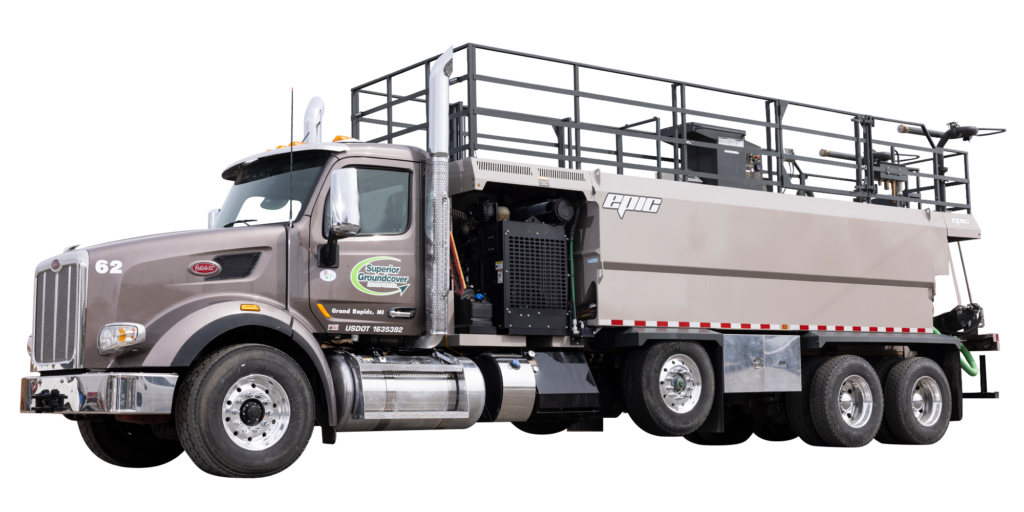Installing crushed concrete for your next project? You’re probably interested in crushed concrete because you’ve read about all the benefits it offers, especially here in Michigan or other areas with similar weather.
Crushed concrete is a sustainable, reliable, and affordable material that is often used for a variety of residential and commercial projects from driveways to landscaping, to entire parking lots and roads. Want to learn more about how crushed concrete is made, how it can be used, and its benefits? We have all the resources you need to become a crushed concrete expert.
Luckily, crushed concrete is fairly easy to install. In this article, we’ll walk you through the steps to installing crushed concrete for your next project.
Table of Contents
What kind of project are you attempting?
Crushed concrete can be used in a variety of applications. On top of that, there are several types and sizes of crushed concrete, which are better suited to different applications.
Crushed Concrete for Landscaping
Crushed concrete can be reused to create elegant walkways throughout your landscaping. For this type of project, you will want to use small, uniform pieces of crushed concrete in order to create a beautiful path that also has good drainage.
Crushed concrete can also be used to create raised garden beds, which improves drainage and warms soil allowing for faster growth.
You can pretty easily create retaining walls by layering crushed concrete. Crushed concrete retaining walls help to control erosion on slopes or hills in your yard. For this type of project, you can use different sizes of crushed concrete. A layer of smaller, more broken-up crushed concrete will create a stable base. Layers of larger crushed concrete packed with dirt will then establish a functional, even, and appealing retaining wall.
Lastly, crushed concrete is excellent for improving drainage in your landscaping. Make sure to use small crushed concrete as an alternative to gravel.
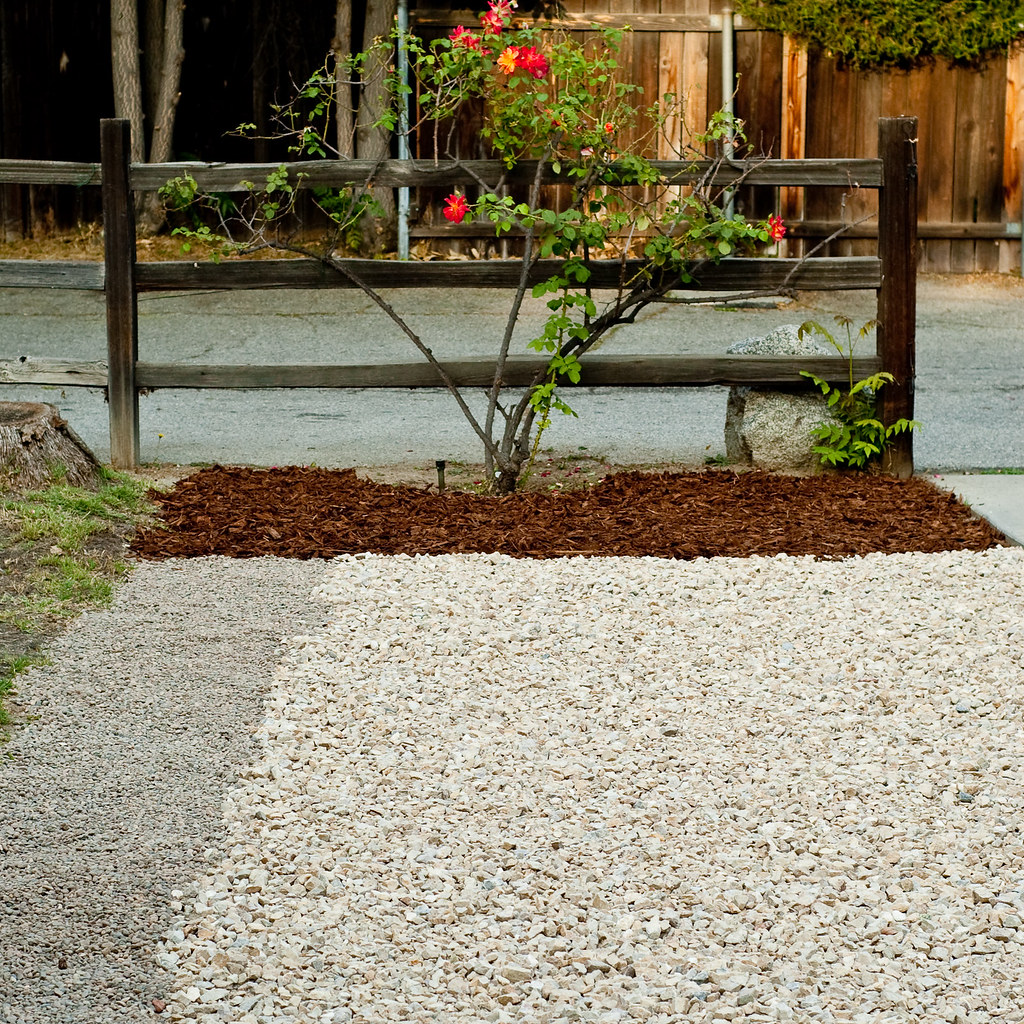
Crushed Concrete Driveways
Crushed concrete is an ideal solution for driveways here in Michigan, as well as in places with similarly changing temperatures. Changing temperatures cause regular concrete slabs to crack and deteriorate over time. Crushed concrete stands up to extreme weather and lasts forever with the proper (minimal) maintenance. Depending on the size of your driveway and natural environment, there are several types of crushed concrete that could work for you.
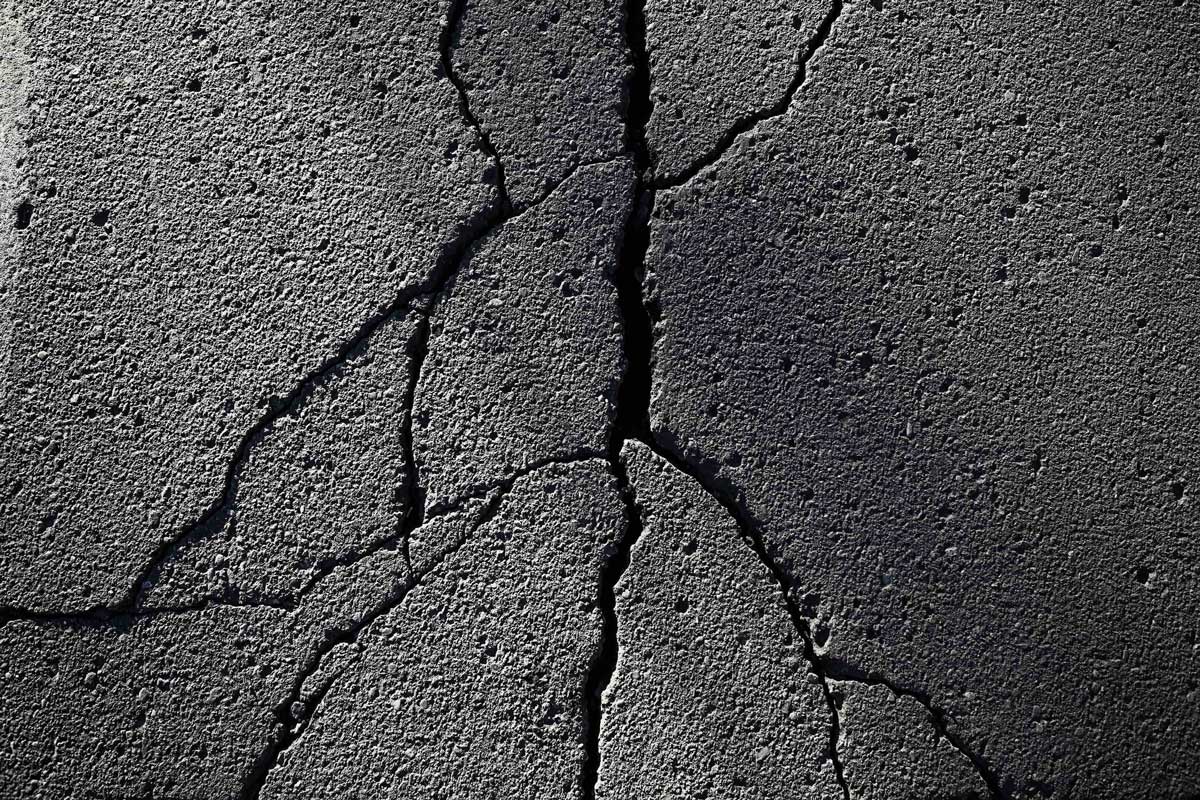
Crushed Concrete Parking Lots or Roads
You can save a great deal of money on larger projects such as parking lots and roads by using crushed concrete. There are larger variations of crushed concrete available for these types of projects that help finish the job efficiently. There are also variations that provide better drainage, or a smoother driving surface.
As you can see, there are many ways to use crushed concrete, and many types to choose from in order to accomplish your projects. It can be overwhelming to choose the best kind of crushed concrete for your project.
Need help choosing the best material for your specific project? Contact the expert team at Superior.
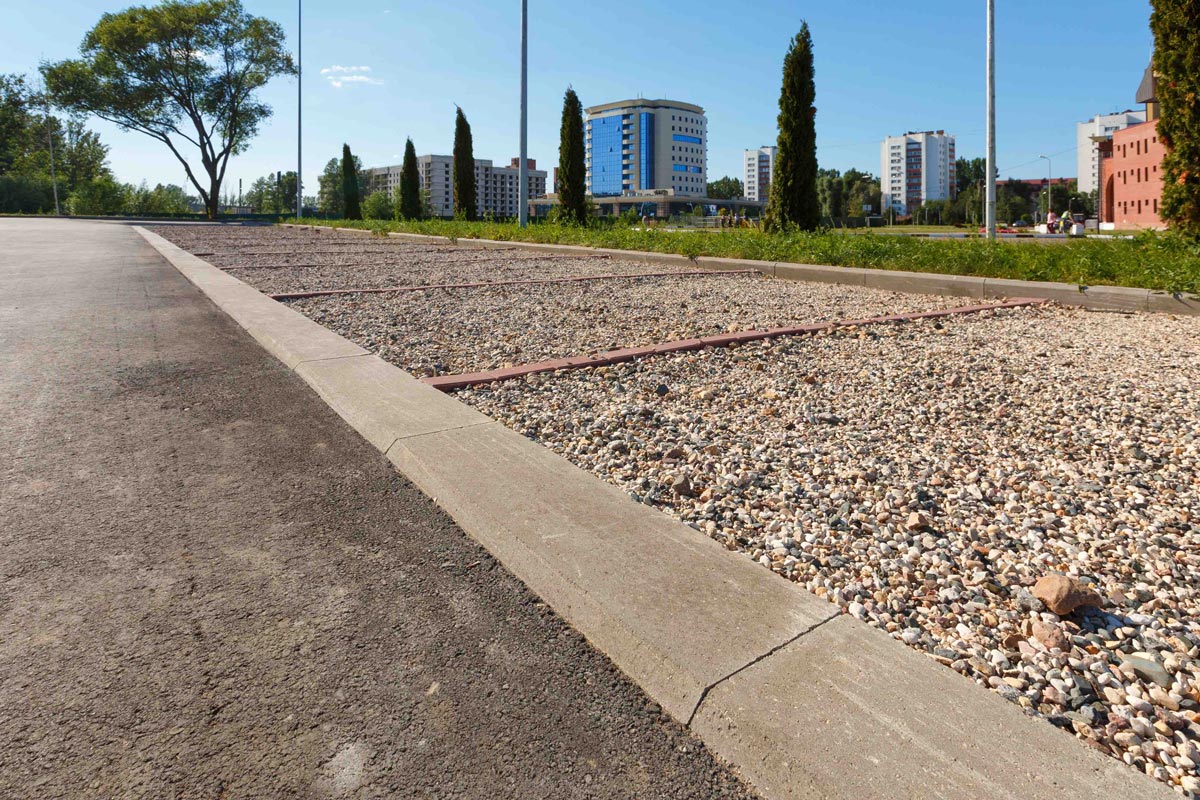
Factors to Consider
There are many factors to consider before beginning your project. Once you’ve established the correct materials to use and considered proper drainage, you still have to determine how to make your investment last as long as possible.
Choosing the right material can get you a long way towards establishing a long-term crushed concrete solution, however there are still potential threats to your project such as washout and erosion.
How to prevent water runoff from washing out crushed concrete:
The very best way to prevent water runoff from washing the crushed concrete away from your project is to make sure you have a proper drainage system in place. Typically this means installing a french drain. We have an in-depth article on how to do this here.
Another way to keep your crushed concrete in the right place is to make sure you’re using the right material and to create a slope in projects like driveways, roads, and walkways.
How to prevent erosion:
If your project is on a slope, you may want to consider installing a stabilizing grid system on top of your base. These systems typically come in plastic sheets or panels, which form small cells. You can attach these sheets or panels to your project area prior to installing the materials, and then fill them with crushed concrete. This helps establish a more stable surface, resistant to erosion.
Routine maintenance will also help prevent erosion. Make sure to rake out any weeds or other imposters like leaves or branches, remove any dirt, replace and repair edging, fill any holes with fresh crushed concrete, etc. Keep in mind: crushed concrete will harden and compact over time, creating a smoother surface, but also causing the height to decrease. You can add a layer or two each year to maintain the height.
Make sure you repair any damage to your project as soon as you notice it. Examples of damage that needs to be addressed quickly are: depressions or areas of thinning. To address these, use a rake or shovel to level the crushed concrete, then tamp it down again.
How much crushed concrete do I need?
To determine how much crushed concrete is needed for your project, first consider the size of the area you need to cover. Materials are typically priced by cubic yard or cubic ton. Different applications will require a different amount of material. For example, driveways require at least three layers of material three to four inches thick. Retaining walls require different sizes of concrete and will vary in height based on your specific landscaping.
It can be difficult to estimate how much material to buy when you consider all of the variables involved. Ordering the wrong amount can waste time and money. The two main things to consider before ordering materials are:
- The dimensions of the area you’re covering.
- How many layers you will need to place to successfully complete your project.
First, measure the length and width of the project area. Multiply the length and width to come up with the square footage of your project. For example, an 18’ by 10’ area is 360 square feet.
Second, determine how many layers or how deep you will need to cover the area depending on the type of project. Usually you will need at least two inches of material.
Next you will need to determine the size of the material you’re using. Depending on the size of the material, coverage area per one ton changes. After you determine the size of the material you’re using, you can check with the supplier how much coverage one ton offers.
Take the square footage and divide it by the coverage area per one ton of the material you’re using.
Here is the formula:
L x W = Square Footage
Square Footage / Coverage Area per 1 ton = Tons of material required for your project.
Superior Groundcover can help you determine the right materials and the required depth for your project to ensure you’re buying the correct amount of material, saving time, and saving money.
Excavation Requirements
Once again, excavation requirements change based on the project. If you are using crushed concrete to create a drainage system for your home, visit our foundation drainage system article where we break down how to create the drainage system from start to finish, including excavation.
Prepping Job Sites
While installing your own crushed concrete is not the most difficult landscaping task, it does involve some manual labor and a large chunk of time depending on the scale of your project. Crushed concrete driveways can take a full day or more to complete. Make sure you’re ready and able to operate equipment, lift heavy stone, and spend time spreading materials.
Before excavation can occur, you’ll have to mark off the area where you’ll be placing the materials. Whether you’re using crushed concrete for landscaping, walkways, or a driveway, you should take your time deciding how you want your project to look, what the drainage requirements are, and the amount of material you’ll need to complete it.
Once you’ve decided on the layout of your project, you can mark off the area with flags or landscaping paint. Next, it’s time to excavate or clear the area.
For driveways and other large-scale projects, a shovel won’t be enough. You can rent equipment from most hardware stores. Generally, digging to a depth of nine to twelve inches is sufficient. Make sure to dig to an even depth over the entire area.
Next, make sure to remove any leftover debris like branches, leaves, roots, etc. Once the area is clear, tamp down the soil to create a smooth even surface.
Is a retaining wall required for my driveway or walkway project?
Retaining walls are both visually appealing and practical for preserving your work. Using larger crushed concrete to form a border can increase property value and prevent crushed concrete from being displaced.
Retaining walls can also help with crushed concrete in landscaping by preventing the rocks from scattering and ending up in the yard where they can damage your lawnmower.
Superior Groundcover can help you decide if a retaining wall will be beneficial for your project.
What tools and materials do I need for crushed concrete installation?
Required materials will vary by project. In order to install a crushed concrete driveway you will need:
- Cones and signs for safety
- Markers such as landscaping paint or flags
- Gloves
- Shovel
- Wheelbarrow
- Grade laser
- Rental excavation equipment such as a small loader or tractor, and a compactor
- Geotextile cloth or landscaping fabric
- Optional grid system
- Crushed concrete for the base
- Crushed concrete for fill
- Rake
- Larger crushed concrete for optional retaining wall.
DIY Crushed Concrete Driveway or Road Installation
After you’ve made your plan, purchased materials, marked off, and excavated the area, it’s time to begin installing your crushed concrete driveway.
The first step after the excavation is to apply landscaping fabric.
In order to prevent pesky weeds from infiltrating your driveway, you can lay down geotextile cloth or landscaping fabric.
Geotextiles are permeable mesh fabrics which, when used in the soil as part of a foundation drainage system or crushed concrete project, have the ability to separate, filter, reinforce, protect, or drain. They help to prevent weeds from growing in your driveway.
Weeds not only ruin the look of your driveway but also create stability problems.
Next, pour your base layer.
Use larger crushed concrete to cover the entire area to a depth of three to four inches. Next, tamp down the area to make a smooth, even surface.
Now it’s time to pour the crushed concrete.
Pour the crushed concrete evenly atop the base layer. Make sure the depth is even across the entire surface.
Compact and rake.
After creating your crushed concrete driveway, you’ll have to take measures to ensure it’s safe and stable. Compacting the materials will accomplish this by making sure there are no large depressions or areas where loose materials could shift or be washed out.
The simplest way to do this is by driving over your driveway a few times. You could also use a roller for this process. After you’re satisfied with this step, you should rake the crushed concrete to create a slight peak in the center. This will help with drainage when it rains.
Edge your driveway.
This optional step not only adds property value, but increases the aesthetic appeal, and helps prevent crushed concrete from straying.
You can use larger crushed concrete to create your edging/retaining wall.
Other Considerations
Know the regulations in your area.
There are specific regulations for driveways based on where you live. If you’re in Michigan, you can reference the MDOT Regulations for Parking Lots and Driveway Construction Section 12.08.03.
These regulations specify what material types are allowed, the required thickness, grades and more.
Where do I buy crushed concrete?
Crushed concrete can be purchased at concrete recycling plants, however, you’ll have to make sure that the plant offers the material type you need for your project.
Superior Groundcover not only offers the crushed concrete materials you need, but also offers a fast and easy installation. To ensure your project gets done the right way the first time, rely on Superior’s expert team.

